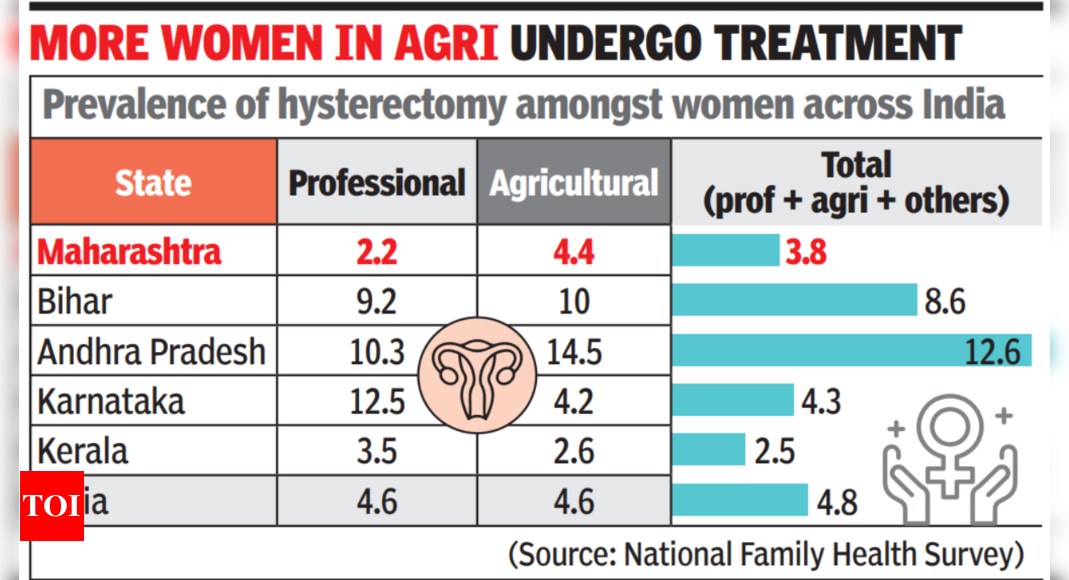MUMBAI: An Indian woman living in a rural area, who is illiterate, obese and has health insurance, is more likely to undergo a hysterectomy than an urban woman with an office job, according to a new statistical analysis study. Female agricultural workers were 32% more likely to have a hysterectomy compared to other occupational groups, according to the study recently published in the Journal of Medical Evidence. He found a high number of hysterectomies, many of them unnecessary, among Indian women. The prevalence of hysterectomy in women aged 25 to 49 years was 4.8% according to the National Family Health Survey-4 (2015-16) and increased slightly to 4.9% in the NFHS-5 (2019-21).
The study also found that seven out of ten hysterectomies are performed in private health facilities, while 32.2% of hysterectomy surgeries are performed in public health facilities. “Private doctors are emphasizing the need for for-profit hysterectomy, even for benign conditions that can be treated with less invasive methods and medications,” said authors Gaurav Gunnal of the Deonar-based International Institute of Population Sciences and the Dr. Sudeshna Roy from National Institute of Health and Family Welfare, New Delhi.
For example, in Maharashtra, while 2.2% of professional women in the age group of 25-49 years underwent hysterectomy, the percentage was double (4.4) for agricultural workers. In Andhra Pradesh, the corresponding figures were 10.3% for professional women and 14.5% for those in the agricultural sector. Women from the states of Andhra Pradesh (12.6%), Telangana (11.1%), Bihar (8.6%) and Gujarat (6.2%) reported the highest prevalence of hysterectomy.
“Overall, the prevalence of hysterectomy was high among women in the age group of 40-49 years, rural residents, Hindu, OBC, illiterate, middle and rich wealth quintiles, three or more parity, young age at born, obese and covered under health insurance,” he said. “Women in households with health insurance coverage are more likely to have a hysterectomy than women in households without adequate coverage,” Gunnal said.
The main causes of hysterectomy were prolonged excessive bleeding (55.4%), followed by fibroids/cysts (19.6%) and uterine disorders (13.9%). The authors blamed this trend on cultural and social influences: “Menstrual taboos and limited knowledge about reproductive health contribute to the high prevalence of hysterectomy, with some women opting for it to avoid menstrual problems or for fear of breast cancer.” reproductive health,” they said. .
Don’t miss the annual horoscope 2025 and the Chinese horoscope 2025 for the zodiac signs Rat, Ox, Tiger, Rabbit, Dragon, Snake, Horse, Goat, Monkey, Rooster, Dog and Pig. Spread love this holiday season with these Happy New Year wishes, messages and quotes.




